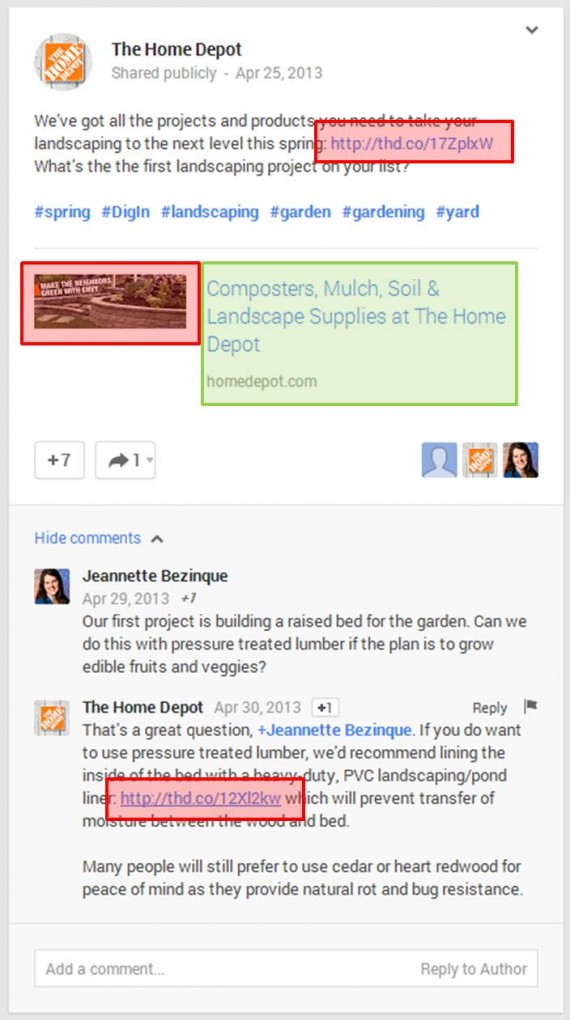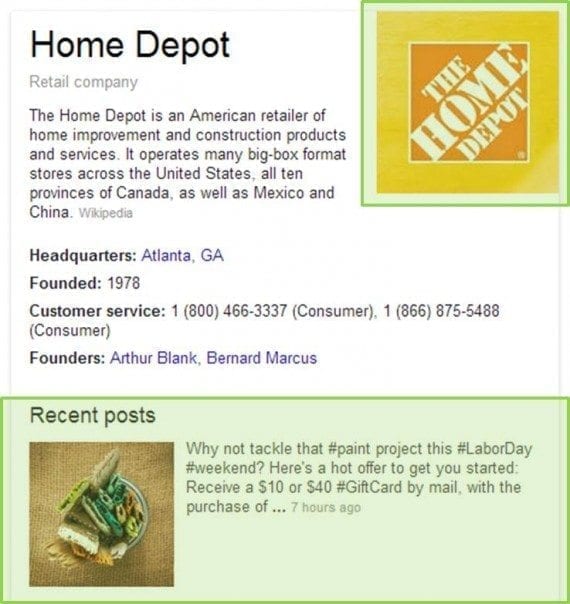Two years ago when Google+ launched, I had high hopes for its value as a marketing platform to rival Facebook and Twitter. Read my enthusiastic missal, “Google+: The Beginning of a Revolution?” The reality of Google+ for marketers thus far has been less than glorious, with low adoption rates for many ecommerce sites’ target audiences.
Even so, Google+ matters to search engine optimization.
I know, your audience isn’t on Google+. The consumers you’re trying to reach are on Facebook, Twitter, Pinterest, or LinkedIn. So why not engage with them on their social platforms of choice, but echo the conversation on Google+?
What follows is why you can’t afford not to.
1. Shared Links Pass Authority
Unlike most social platforms, Google+ passes link authority through some of the links posts. Specifically, when you share a link to a page, that link is free of the rel=”nofollow” element that would strip away its link authority. Links pasted into the text of the post and shared in comments do carry a nofollow, however, as an attempt to combat spam.
For example, The Home Depot shared this link about composting and mulching earlier this Spring. The links highlighted in green are free of nofollows and pass link authority from Google+ to the shared content on HomeDepot.com. The links highlighted in red are nofollowed and do not pass link authority.

Sharing a link on Google+ passes link authority to that page, as highlighted in green, above.
2. Correlation to Higher Rankings
Search marketing tools vendor Moz’s biannual search ranking factors report uncovered a striking correlation between higher search rankings and Google +1s. Though Google denies that +1s are an algorithmic factor in search rankings, some speculate that sharing content on Google+ has a causal relationship with higher Google rankings. As Google’s social network becomes more mainstream, we can expect its social signals to be incorporated into Google’s search algorithms.
3. Brand Billboard in Search Results
When enough searchers are looking for information about a brand, more information can be displayed in a special Knowledge Graph section to the right of the traditional search results. Triggered by a search for the brand’s name, these Knowledge Graph features typically display the brand’s logo, company information and most recent post from Google+. It’s visually engaging and gives ecommerce sites another way to expand their search result footprint.

Home Depot’s Knowledge Graph, on Google’s search results page.
The Home Depot’s Knowledge Graph is an excellent example. The green highlighted areas illustrate the content that the brand can influence. Both the logo and the recent post are taken from the brand’s Google+ profile. The other information in the graph is piped in from Wikipedia and other trusted but independent sources.
Consider how much you’d be willing to pay for a large ad on Google’s search results featuring your brand’s logo and a piece of content your brand recently shared. But you don’t have to pay a thing. You just have to share content that your brand probably already shares in another social network on Google+ as well. Keep in mind, when your audience embraces Google+ you’ll need a more sophisticated social media marketing strategy.
4. Quick Discovery of New Content
Google’s search crawlers use Google+ as a source of fresh content. Bots often crawl Google+ content within minutes after it has been shared. For sites that want to beat their competition to market, or sites that suffer from slow crawl rates, sharing to Google+ as a discovery vehicle to jumpstart the indexation of new content can be a big benefit.
5. The Audience Will Come
When Gmail launched in 2004, how many flocked to sign up for accounts? Most users at the time were on Hotmail, AOL or Yahoo Mail while Gmail was in beta form. Yet today, Gmail is the dominant email service. Google is known for launching a product before it’s polished and improving it slowly until it becomes part of our lives.
Based on the strength of its overall web and mobile platform, the fact that Google+ is baked in to that platform, and our migration to increasingly digital and mobile lifestyles, the time will come when the mainstream will embrace Google+.
What would you give to be one of the oldest brands on Facebook or Twitter? With that legacy come practice, education, growth, and followers. and cache. No matter how established or valuable, even big brands can’t buy the kind of influence that the early adopters enjoy. At this point any ecommerce brand can still be an early adopter on Google+, relatively speaking anyway.
From a practical standpoint, it doesn’t make sense to spend resources already stretched thin on a grand Google+ marketing strategy. But neither can brands afford to ignore Google+ entirely. Sharing the content you already create for other social networks on Google+ as well will start your brand’s education process and likely give you an edge over the competition.




